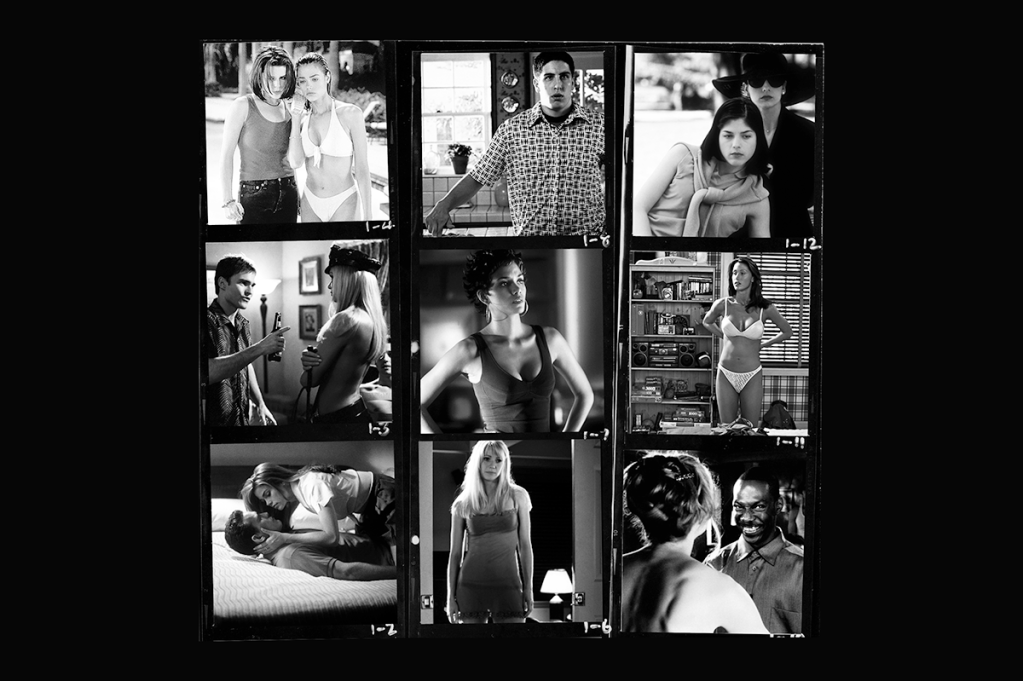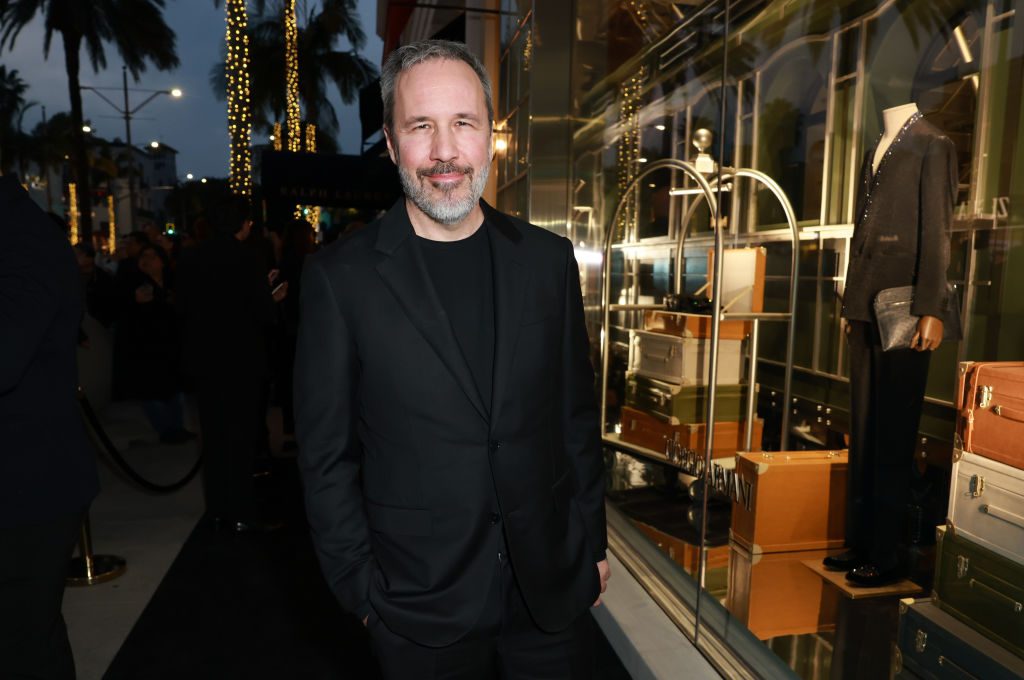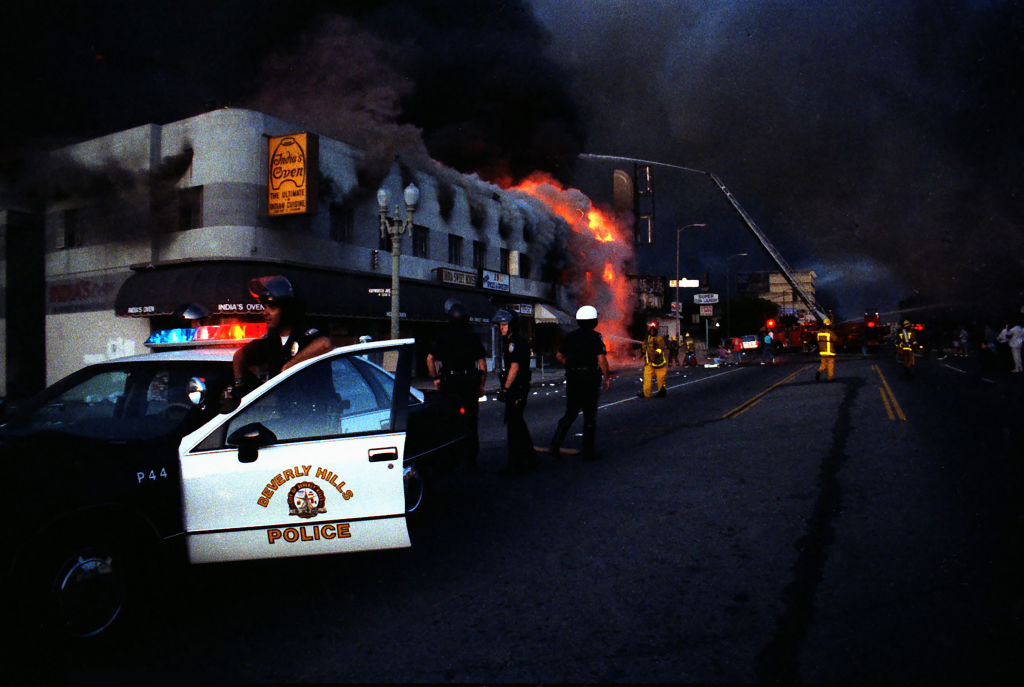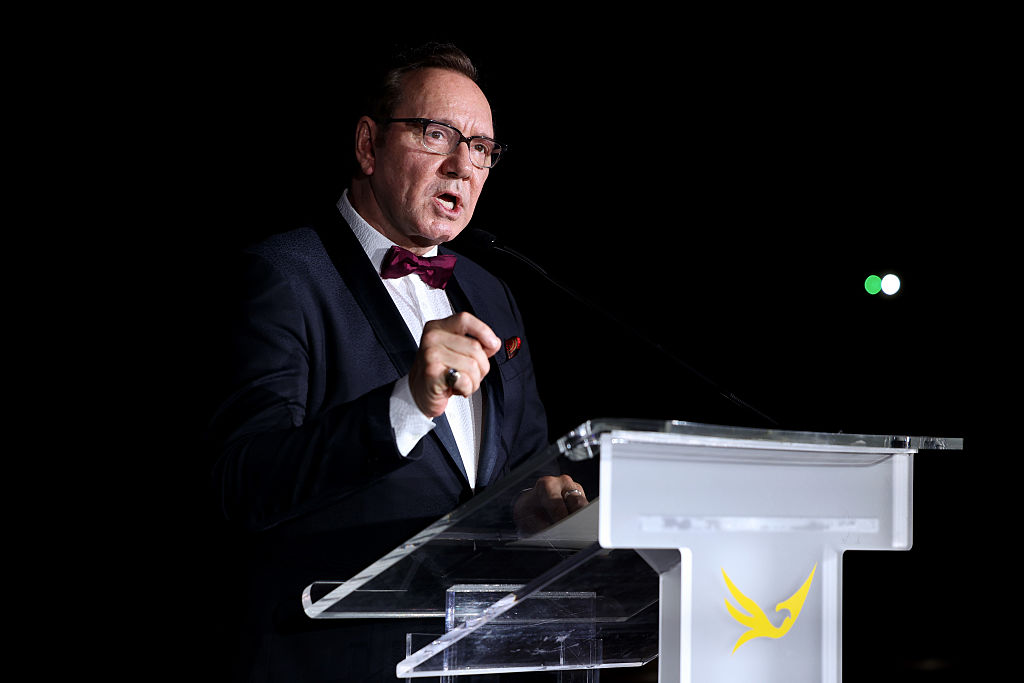Even though the endless debate about sex scenes in movies recurs every three or four months, it remains fixed. Nothing ever moves forward; nothing more is understood; no one’s perspective is shifted. Dug in on both sides of an argument that remains black and white, people refuse to move. Maybe one day they’ll be able to talk in Technicolor, but for now, some are distressed by erotic cinema and others are desperate for more of it. Stellar home-video labels like Severin, Arrow and Vinegar Syndrome continue to provide high-definition discs of genre films full of naked women and bloody bodies. But if Tom Cruise is the only real movie star left, the world won’t get more than a chaste kiss (maybe) from modern American cinema.
Sincere complaints from teenagers and twenty-somethings about too much sex in movies and television, in an already prudish period, isn’t something to scoff at or dismiss entirely. Anyone with two brain cells should be able to figure out that the first generation cursed with smartphones and high-speed internet from birth is likely completely traumatized by the abundance of extreme and graphic images they saw growing up.
A generation before me, middle schoolers debated whether Marilyn Manson got his ribs removed so he could perform auto-fellatio; a generation after me, middle schoolers were showing each other ISIS beheading videos and hardcore pornography. Until you recognize that, you’ll get nowhere calling people puritanical or immature. If you look at many American movies made before 2014, the pendulum-swing back to “decency” isn’t hard to understand. Even after you get past their peculiar bigotries and crudities, it’s clear that popular American cinema of the 2000s promoted an insidious male-centric hedonism, not patriarchy: most of the movies of my youth regarded the women in them — both the actors and their characters — as disposable outside of their sexual potential.
I was born in 1992, and my family went to the movies every weekend for my entire childhood. The first movie I remember seeing was Beavis and Butthead Do America, at the age of four. My memory becomes much clearer at around age six, and I can recall every movie I saw in theaters just by looking at release calendars. Because the “sex scenes in movies” debate recurs so often with little variation, I went on a spree last fall rewatching movies I hadn’t seen since their theatrical release: Bowfinger, Bicentennial Man, Hardball, Legally Blonde, Galaxy Quest. I come back to masterpieces like Zoolander and Death to Smoochy often, but there were so many “classics” in my mind I had to reevaluate. I’ll never throw away my copy of Dude, Where’s My Car? but its transphobia can’t be dismissed, any more than the racism of 1986’s Soul Man.
The objective of most of the comedies I saw as a kid was to “score”: from Beavis and Butthead to Saving Silverman, Harold and Kumar Go to White Castle and Monkeybone. The men in these movies — man-children, really — were obsessed with having sex. “Getting laid” got people killed. Being an active and attractive bachelor was the ultimate status symbol, more than money or anything noble. Before I was ten, my brother and I could see anything beneath an R-rating — after that, it was a free for all.
It was a surprisingly good moral education. We weren’t raised religious, but in retrospect, the routine of going to the movies served a similar purpose: a gathering of loved ones and strangers in a room, alone together, receiving this week’s sermon. If I hadn’t had a thoroughly stable home life with loving and intellectually adventurous parents, I’m not sure I wouldn’t have adopted the morality of the movies whole cloth. The obscure criteria of the MPAA rating system allow far more violence than sex to pass through mainstream movie theaters, but moans and thrusts are not what make so much American cinema corrosive.
I didn’t see nipples when I was six. But I did see Heather Graham having sex with nearly everyone in Bowfinger (trying to get ahead in Hollywood). Sitting in that theater somewhere in the East Village in 1999, I didn’t know the particulars of intercourse, but I loved Heather Graham, and it was easy to see why everyone was falling so easily for her. None of these scenes in Bowfinger are shot explicitly, and at the time, like most “sex scenes” in PG-13 movies, they didn’t look that different from my parents reading the paper in bed in the morning. Women my age suffered through many of these films, and the pop culture that produced them: Charlie’s Angels, American Pie, Shallow Hal and The 40-Year-Old Virgin, among countless others, promoted beauty standards that left millions with eating disorders.
Hollywood has never treated minorities or women well, but movies of the 2000s are unique in their hypersexuality, disconnected from chauvinistic attitudes of the past and closer to the pure objectification of pornography. Nude scenes could still sell a movie (Swordfish), or at least make it notorious (The Brown Bunny and Shortbus, independent films that never played on more than 100 screens but whose unsimulated sex scenes have been downloaded by millions).
The dramatic shift in attitudes has left even lurid legend John Waters stunned. When he was informed by the Los Angeles Review of Books last year, Waters said, “Young people don’t want to see sex in movies? Jesus Christ.” Waters and I may be generations apart, but neither of us went through puberty with high-definition pornography streaming on our smartphones.
A film cannot assault you. It’s a product meant for public consumption — unlike so much “revenge porn” littering the internet. The presence of anything erotic in a movie theater, even streaming on Netflix or HBO, probably produces completely different reactions in people born either side of the turn of the millennium. Sex used to bring people to movies: besides the red-light district, where could you see a threesome in 1998 other than Wild Things, or Selma Blair and Sarah Michelle Gellar making out in Cruel Intentions a year later? But by the end of the millennium, internet pornography began its permanent proliferation, leading directly into the most hypersexual American decade in living memory. Popular culture, from music videos, commercials, films, television, publishing to news programming, oozed perversity.
Rolling Stone declared Lindsay Lohan “Hot, Ready and Legal!” in July 2004 when she turned eighteen; Britney Spears sang “I’m a Slave 4 U” wearing a bra and a giant snake at the VMAs two days before 9/11; “fat asses” were constantly insulted and worried over, only to become fashionable early in the 2010s. Free of anxiety or stigma, more and more explicit sexual content seeped into the mainstream. In the 2000s, pop culture tried to catch up with pornography, and continued until the public pumped the brakes in the mid-2010s.
Media influences as much as it reflects us and although millennials didn’t have streaming hi-def hardcore, sex was no longer a mystery. And so the appeal of clearer distinctions between the pornographic and the mainstream is understandable. A decisive shift in attitudes to sex in culture came in 2014. Robin Thicke could have the song of the year in 2013 with “Blurred Lines,” but a murky date-rape dance anthem will never be received the same way again. There’s been an epochal shift in audience attitudes that isn’t a passing phase or a temporary tantrum.
Eroticism isn’t being eliminated from the movies, the Hays Code isn’t coming back, but progress can’t be made until the last century’s sexual mores and preoccupations are reexamined. There’s no going back from the instant access we now have to depictions of every sexual act that could be imagined. And it’s unrealistic to think that that change – a first in human history – wouldn’t influence depictions of sex more generally. Sex is elemental to the human experience — if our films continue to deal with real life, sex will be there. But maybe it won’t be there to titillate men alone; maybe young boys won’t be primed to score; maybe young girls won’t be destroyed anymore.
This article was originally published in The Spectator’s April 2023 World edition.

























